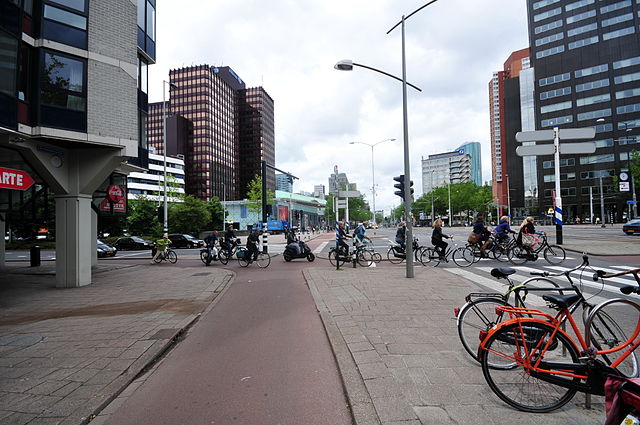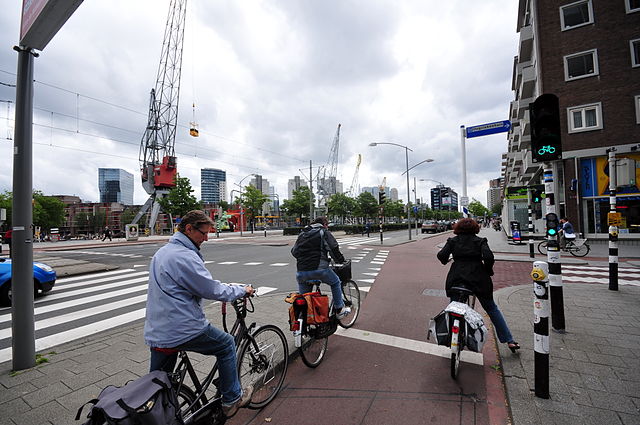A protected intersection or protected junction, also known as a Dutch-style junction, is a type of at-grade road junction in which cyclists and pedestrians are separated from cars. The primary aim of junction protection is to help pedestrians and cyclists be and feel safer at road junctions.
A protected intersection in Rotterdam in the Netherlands. A safe way to cross the road on a bicycle.
A museum exhibit about the Groningen Grote Markt shows a post-WWII bicycle lane that forced cyclists to merge with motorists. This design was eventually removed.
The protection of the vulnerable cyclists with a protected junction with bicycle traffic lights.
Cycleway on approach to a roundabout in Amsterdam
A cycle track or cycleway (British) or bikeway, sometimes historically referred to as a sidepath, is a separate route for cycles and not motor vehicles. In some cases cycle tracks are also used by other users such as pedestrians and horse riders. A cycle track can be next to a normal road, and can either be a shared route with pedestrians or be made distinct from both the pavement and general roadway by vertical barriers or elevation differences.
A cycle track in London. The UK has not implemented cycle tracks in a similar manner to the Netherlands.
A cycle track in Vancouver. Cities which have built cycle tracks have reported increases in levels of cycling.
A two-way separated bike lane in Washington, D.C., with parked cars acting as a barrier between bicyclists and traffic
Cycle tracks with concrete barriers in downtown Ottawa, Ontario, Canada, on Laurier Avenue in 2011








